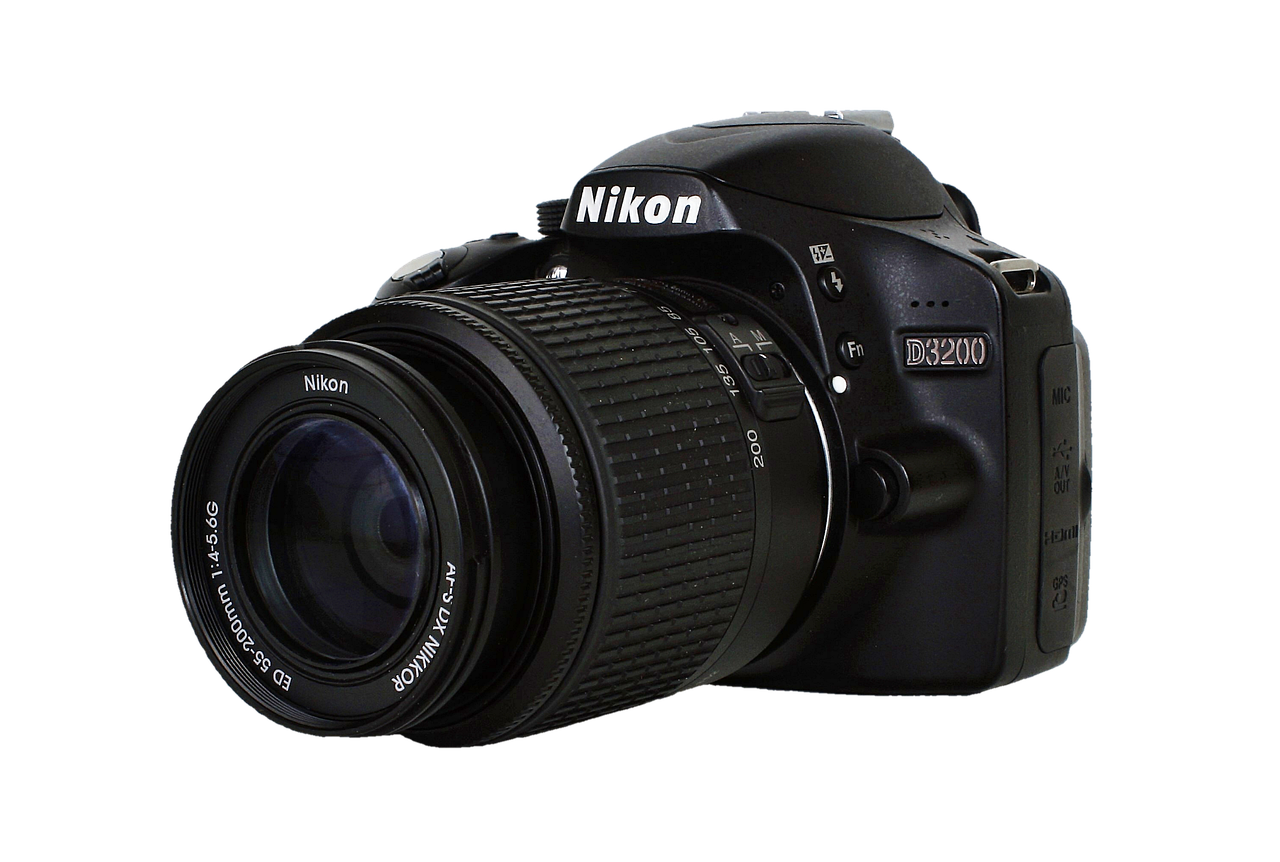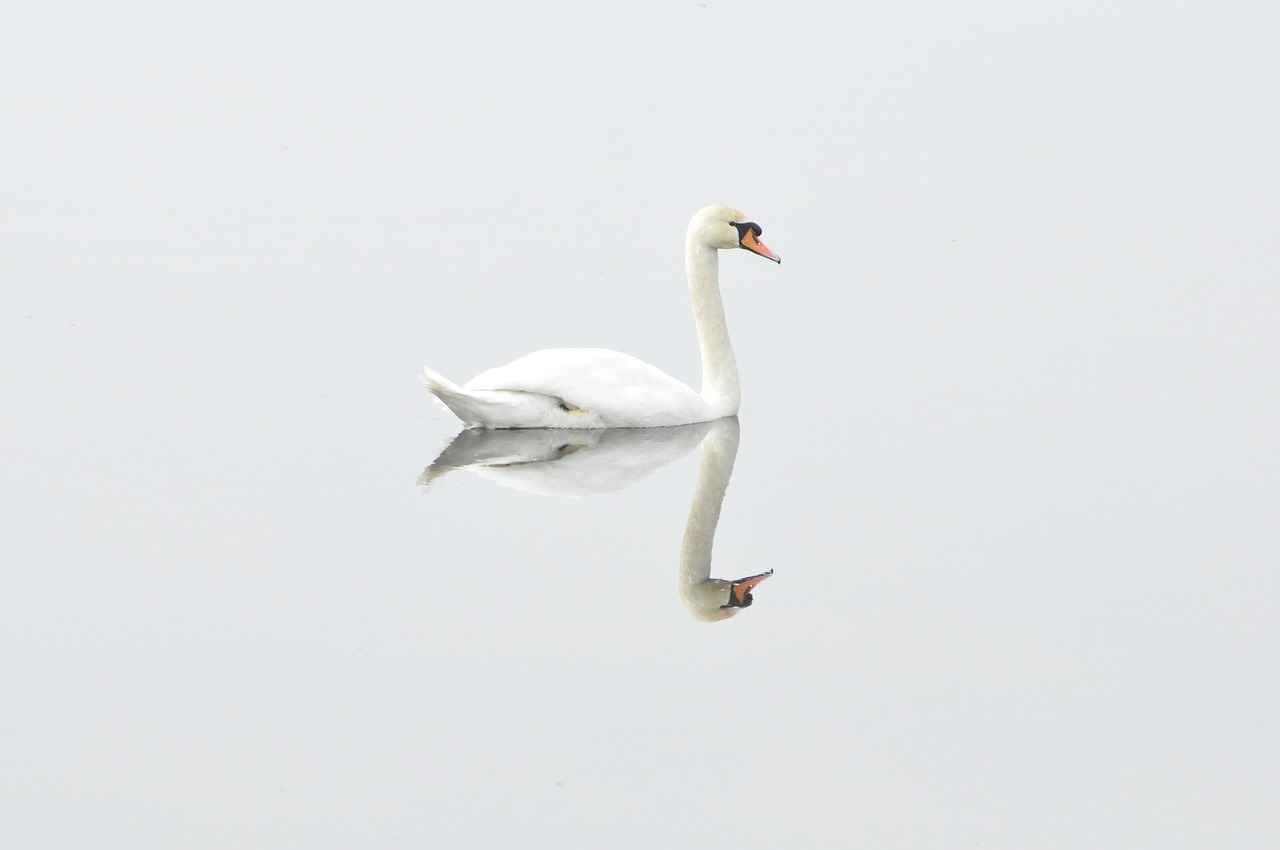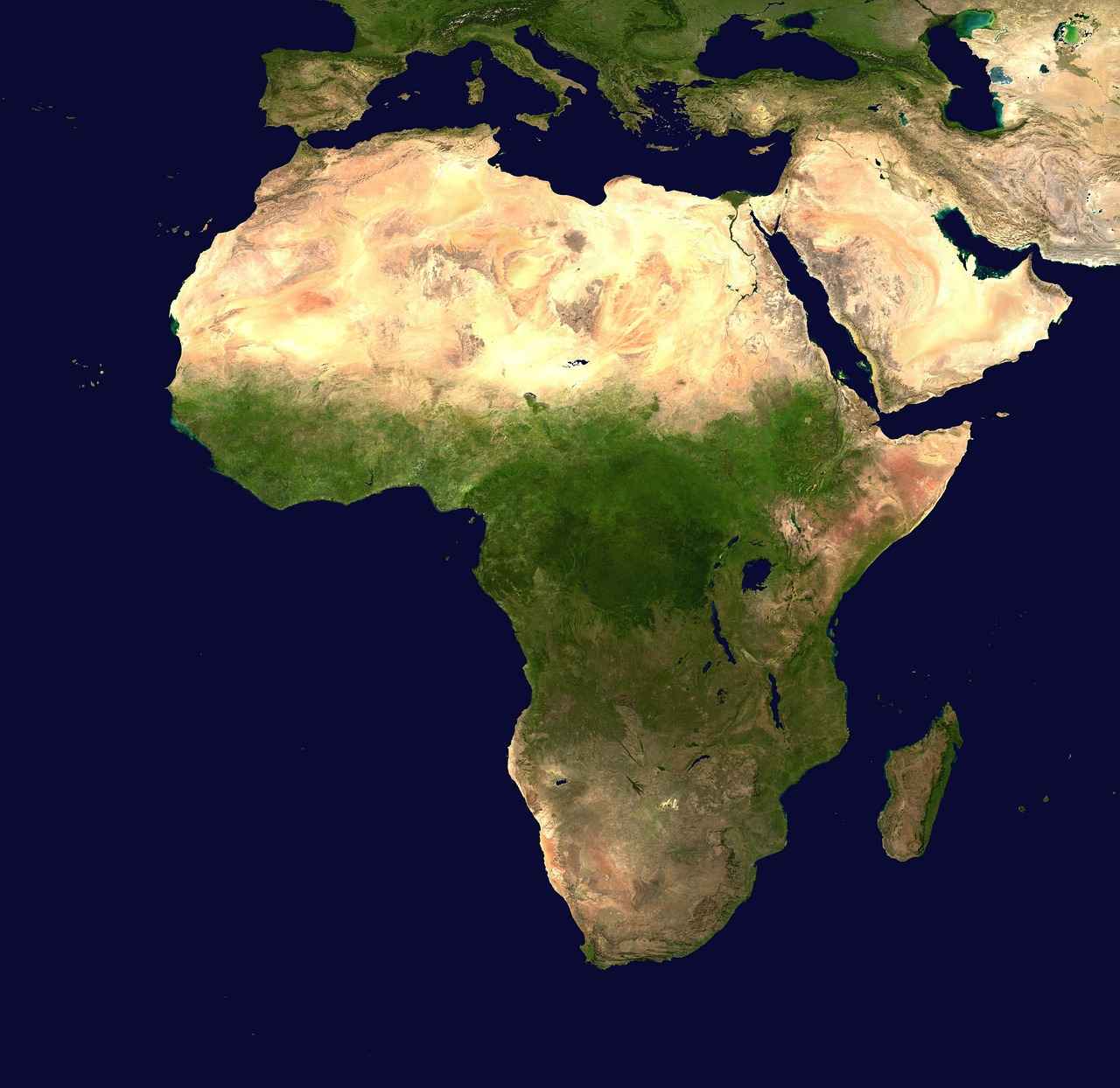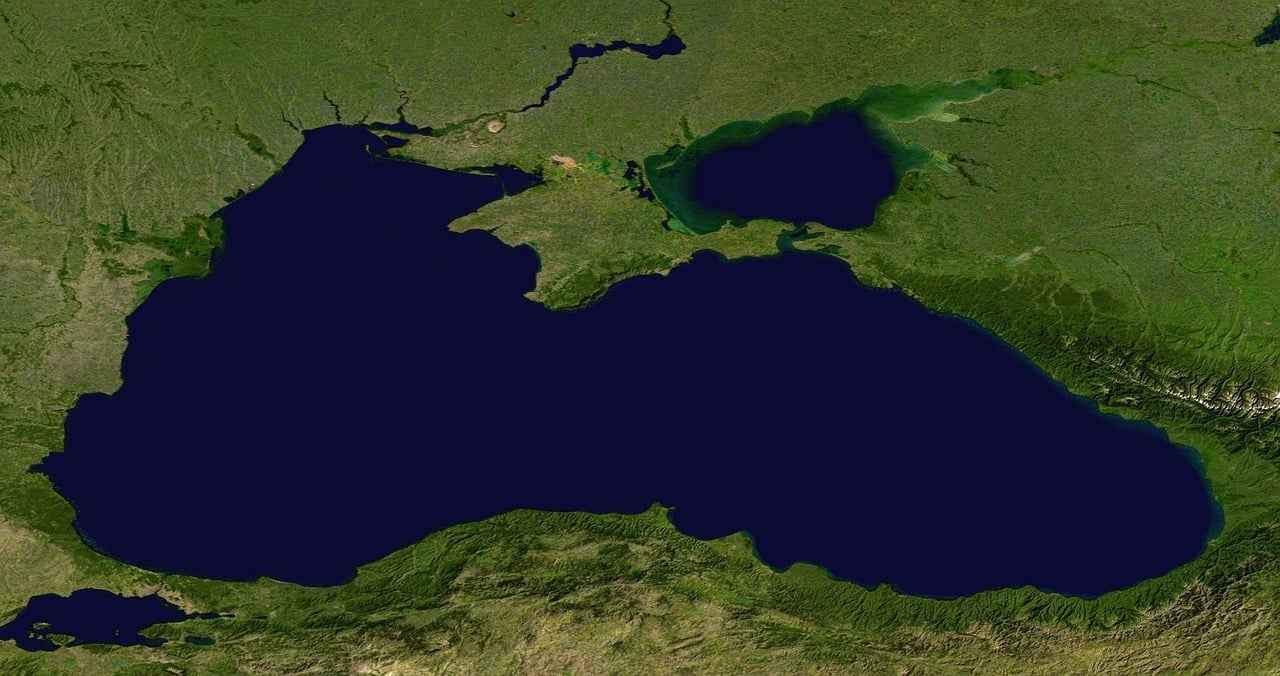This article delves into the revolutionary impact of AI-powered image stabilization on action cameras, highlighting its numerous benefits, the underlying technology, and what the future holds for both photography enthusiasts and professionals alike.
What Is AI-Powered Image Stabilization?
AI-powered image stabilization is a cutting-edge technology that utilizes advanced algorithms to analyze video footage in real-time. This process significantly reduces motion blur and enhances clarity, especially in dynamic environments such as sports events or adventure activities. By employing machine learning, these systems can adapt to various conditions, providing users with smoother and more professional-looking videos.
Why Is Image Stabilization Essential for Action Cameras?
For action cameras, image stabilization is not just a feature; it is essential. Smooth video playback is critical for capturing high-quality footage during fast-paced activities. Without stabilization, users may end up with shaky and unwatchable content. This technology ensures that every jump, turn, and twist is recorded with clarity, allowing for a more immersive viewing experience.
How Does AI Improve Image Stabilization?
AI enhances image stabilization by employing sophisticated machine learning algorithms that predict motion patterns. This capability allows cameras to dynamically adjust settings, resulting in superior stabilization compared to traditional optical or electronic methods. The result is a more refined approach that adapts to various shooting conditions, producing consistently high-quality footage.
What Are the Benefits of AI-Powered Stabilization?
- Improved Video Quality: The most significant benefit is the enhancement in video quality, leading to smoother and clearer footage.
- Reduced Post-Production Time: With better stabilization, creators spend less time editing out shakes and jitters.
- Enhanced User Experience: Users can focus more on capturing content rather than worrying about technical details.
Which Action Cameras Feature AI Stabilization?
Several leading brands have integrated AI-powered stabilization into their action cameras. Notable examples include the GoPro HERO series and DJI Osmo Action, both of which leverage this technology to enhance user filming capabilities. These devices are becoming increasingly popular among both amateur and professional filmmakers.
How Does AI Stabilization Compare to Traditional Methods?
When compared to traditional stabilization methods, such as optical or electronic stabilization, AI stabilization offers a more adaptable solution. It can adjust to varying shooting conditions, significantly improving overall footage quality. This adaptability is especially beneficial in unpredictable environments, making AI stabilization a game-changer in action photography.
What Challenges Do Manufacturers Face with AI Stabilization?
Despite its advantages, manufacturers face several challenges in implementing AI stabilization. These include:
- Computational Demands: AI algorithms require significant processing power, which can be a challenge in compact camera designs.
- Battery Consumption: Enhanced processing can lead to increased battery drain, necessitating improvements in battery technology.
- User-Friendly Interfaces: Manufacturers must ensure that complex AI features remain accessible and easy to use for all users.
How Is AI Stabilization Changing Content Creation?
AI stabilization is revolutionizing content creation by enabling filmmakers and vloggers to capture high-quality footage without the need for complex equipment or extensive editing. This democratization of technology allows individuals of all skill levels to produce professional-looking content, fostering creativity and innovation in the field.
What Future Trends Can We Expect in AI Stabilization?
Looking ahead, we can anticipate future trends in AI stabilization, including:
- Enhanced Predictive Algorithms: Improvements in AI will lead to better motion prediction, further enhancing stabilization.
- Integration with Augmented Reality: Future action cameras may incorporate AR features, providing real-time overlays and effects.
- Improvements in Battery Efficiency: As technology advances, we can expect longer battery life even with demanding AI processes.
How Can Users Maximize AI Stabilization Benefits?
To fully leverage AI stabilization, users should familiarize themselves with their camera’s features, experiment with different shooting modes, and optimize settings for their specific filming conditions. This knowledge will enhance the quality of their footage and overall filming experience.
What Expert Insights Are Available on AI-Powered Stabilization?
Experts in the field emphasize the transformative role of AI stabilization in modern action cameras. They highlight its importance in making high-quality content creation accessible to users of all skill levels, thus broadening the horizons for aspiring filmmakers.
How Will AI-Powered Stabilization Evolve in the Coming Years?
As technology continues to advance, we can expect AI-powered stabilization to evolve significantly. Future iterations will likely incorporate more sophisticated algorithms and machine learning techniques, leading to even greater enhancements in video quality and user experience, ultimately pushing the boundaries of what action cameras can achieve.

What Is AI-Powered Image Stabilization?
AI-powered image stabilization has emerged as a groundbreaking technology in the realm of photography and videography, particularly for action cameras. This innovation leverages advanced algorithms and machine learning techniques to analyze video footage in real-time, ensuring that the final output is free from motion blur and other distortions. This is especially beneficial in dynamic shooting environments, such as during sports or adventure activities, where capturing smooth and clear footage is paramount.
In fast-paced scenarios, the importance of image stabilization cannot be overstated. Without it, footage can appear shaky and unprofessional, detracting from the viewer’s experience. AI-powered stabilization addresses this issue by actively compensating for camera movements, resulting in smoother video playback. This capability is crucial for content creators who wish to deliver high-quality visuals without the need for extensive post-production editing.
AI enhances image stabilization through sophisticated machine learning algorithms that can predict motion patterns. By analyzing the footage frame by frame, these algorithms adjust the camera’s settings dynamically, allowing for superior stabilization. Unlike traditional methods, which rely on fixed parameters, AI systems can adapt to various shooting conditions, ensuring optimal performance whether the subject is in motion or the camera is being jostled.
- Improved Video Quality: The primary benefit of AI stabilization is the significant enhancement in video quality. Users can capture clearer, more professional-looking footage without the distracting shakes.
- Reduced Post-Production Time: With stabilized footage, creators spend less time in editing suites, allowing them to focus more on their creative process.
- Enhanced User Experience: The ease of use associated with AI stabilization means that both amateurs and professionals can achieve high-quality results with minimal effort.
Several leading brands have integrated AI-powered stabilization into their action cameras. The GoPro HERO series and DJI Osmo Action are notable examples, offering users advanced features that elevate their filming capabilities. These cameras not only provide stabilization but also come equipped with additional functionalities that cater to a wide range of shooting scenarios.
When compared to traditional optical or electronic stabilization methods, AI stabilization stands out due to its adaptability. While traditional systems often struggle in rapidly changing environments, AI stabilization can seamlessly adjust to various conditions, resulting in a more refined and higher-quality output.
Despite its advantages, manufacturers face several challenges in implementing AI stabilization. High computational demands require powerful processors, which can lead to increased battery consumption. Additionally, creating user-friendly interfaces that allow users to easily access and utilize these advanced features is crucial for widespread adoption.
AI stabilization is revolutionizing content creation by enabling filmmakers and vloggers to produce high-quality footage without the need for complex equipment. This democratization of technology allows creators of all skill levels to focus on storytelling and creativity rather than technical limitations.
The future of AI stabilization looks promising, with trends pointing towards enhanced predictive algorithms and integration with augmented reality. As technology continues to evolve, we can expect further improvements in battery efficiency and overall camera performance, pushing the boundaries of what is possible in action photography.
To fully leverage the benefits of AI stabilization, users should familiarize themselves with their camera’s features and settings. Experimenting with different shooting modes and understanding the optimal conditions for stabilization can significantly enhance footage quality.
Experts in the field emphasize the transformative potential of AI stabilization in modern action cameras. They highlight its role in making high-quality content creation accessible to a broader audience, thus fostering creativity and innovation in the industry.

Why Is Image Stabilization Essential for Action Cameras?
In the realm of action cameras, image stabilization is not just an added feature; it is a critical component that significantly enhances the overall user experience. Whether you are skiing down a mountain, cycling through rugged terrain, or capturing thrilling moments during a concert, the ability to produce smooth and stable footage is essential. This article delves into the reasons why image stabilization is indispensable for action cameras, particularly in dynamic settings.
First and foremost, the primary function of image stabilization is to minimize unwanted camera shakes and jitters. When engaged in fast-paced activities, even the slightest movement can result in shaky footage that detracts from the quality of the video. By utilizing advanced stabilization techniques, action cameras can ensure that the final product is not only visually appealing but also enjoyable to watch.
Moreover, image stabilization allows users to capture high-quality footage without the need for additional equipment, such as gimbals or stabilizers. This is particularly beneficial for adventure enthusiasts who prefer to travel light. With built-in stabilization, users can focus on their activities without worrying about carrying extra gear.
- Enhanced Viewing Experience: Smooth videos are more engaging and enjoyable for viewers. Whether shared on social media or used in professional projects, well-stabilized footage enhances the overall viewing experience.
- Increased Versatility: Image stabilization enables action cameras to perform well in various conditions, from high-speed sports to casual family outings. This versatility makes them suitable for a broader range of activities.
- Improved Content Quality: For content creators, high-quality footage is paramount. Image stabilization contributes to polished videos that resonate with audiences, thereby enhancing the creator’s brand.
Another significant advantage of image stabilization is its ability to reduce the amount of time spent on post-production. Filmmakers and vloggers often face the tedious task of stabilizing shaky footage during editing. With effective stabilization technology, much of this work is done in-camera, saving valuable time and resources.
Furthermore, the integration of AI-powered stabilization technologies has revolutionized the way action cameras manage motion. By employing machine learning algorithms, these cameras can analyze and adjust to the environment in real-time, leading to even smoother footage. This advancement not only enhances the quality but also allows for greater creative freedom during filming.
Despite the numerous benefits, it is essential to recognize that image stabilization is not without its challenges. Some users may experience a slight crop in their footage due to stabilization algorithms, which can alter the framing of their shots. Additionally, in certain extreme conditions, such as rapid directional changes, even the best stabilization systems may struggle to maintain smoothness.
In summary, image stabilization is a vital feature for action cameras, providing a multitude of benefits that enhance the quality of video content. From reducing shakes to improving viewer engagement, the importance of stabilization cannot be overstated. As technology continues to evolve, we can expect even more sophisticated stabilization solutions that will further elevate the capabilities of action cameras.

How Does AI Improve Image Stabilization?
AI technology is revolutionizing the realm of image stabilization, particularly within action cameras. The integration of machine learning algorithms into this technology allows for a more dynamic and efficient stabilization process. This article delves into the ways AI enhances image stabilization, making it a game-changer for both amateur and professional videographers.
AI-powered image stabilization employs sophisticated algorithms that analyze the motion of the camera in real-time. By predicting motion patterns, these algorithms can dynamically adjust camera settings to counteract unwanted shakes and jitters. Unlike traditional stabilization methods, which often rely on mechanical or electronic systems, AI offers a more adaptable solution that continuously learns from the shooting environment.
The core of AI stabilization lies in its ability to predict motion patterns through extensive data analysis. By processing previous footage, the AI learns how different movements affect the captured image. This predictive capability allows the camera to make real-time adjustments, ensuring that the final footage is smooth and clear, even during rapid movements.
- Enhanced Video Quality: AI stabilization significantly reduces motion blur, resulting in clearer and more professional-looking footage.
- Reduced Post-Production Time: With smoother footage, creators spend less time editing and correcting shaky videos.
- Improved User Experience: The technology allows users to focus on capturing the moment rather than worrying about technical adjustments.
One of the standout features of AI stabilization is its ability to make real-time adjustments based on the shooting conditions. For instance, if a user is filming in a high-speed environment, the AI can automatically enhance stabilization settings to compensate for faster movements. This adaptability ensures that users consistently capture high-quality footage, regardless of the situation.
When comparing AI stabilization to traditional methods, the differences are stark. Traditional stabilization techniques often rely on physical components, such as gimbals or optical stabilization, which can be limited in their effectiveness. In contrast, AI stabilization is not bound by physical constraints, allowing for a more comprehensive approach to image stabilization that can adjust to various conditions and movements.
While AI stabilization presents numerous advantages, manufacturers face challenges in its implementation. These include high computational demands, which can affect battery life, and the need for user-friendly interfaces that make the technology accessible to all users. Addressing these challenges is crucial for the continued evolution of AI stabilization in action cameras.
The future of AI-powered image stabilization looks promising. As technology advances, we can expect to see even more sophisticated algorithms that further enhance predictive capabilities. Additionally, the integration of AI with augmented reality could open new avenues for content creation, allowing users to experiment with dynamic effects and real-time enhancements.
To fully leverage the advantages of AI stabilization, users should familiarize themselves with their camera’s features and settings. Experimenting with different shooting modes and understanding how AI interacts with various environments can lead to significantly improved footage quality. By maximizing these features, users can elevate their filming experience and produce stunning content.
In summary, AI is set to redefine image stabilization in action cameras, offering unparalleled benefits and capabilities. As this technology continues to evolve, it will undoubtedly enhance the way we capture and share our experiences, making high-quality content creation accessible to everyone.

What Are the Benefits of AI-Powered Stabilization?
AI-powered stabilization technology is revolutionizing the way creators approach video production, especially in dynamic environments. With the advent of sophisticated algorithms and machine learning, the benefits of AI-powered stabilization are becoming increasingly evident, transforming the landscape of action cameras and video content creation.
One of the most significant advantages of AI-powered stabilization is the enhanced video quality it provides. By analyzing footage in real time, AI algorithms can effectively reduce motion blur and correct any shakes or jitters that occur during filming. This results in smooth, professional-grade videos that captivate audiences and elevate the overall viewing experience.
Traditionally, stabilizing shaky footage would require extensive post-production work, often consuming valuable time and resources. However, with AI-powered stabilization, much of this work is done automatically in-camera. This means that creators can spend less time editing and more time focusing on what truly matters: crafting compelling content. The efficiency gained here is invaluable, particularly for content creators who need to produce high volumes of work.
AI-powered stabilization not only improves the quality of the footage but also significantly enhances the user experience. It allows creators to shoot with confidence, knowing that their videos will be smooth and visually appealing. This user-friendly approach encourages more people to engage in content creation, regardless of their technical expertise. The technology effectively democratizes high-quality video production, making it accessible to a wider audience.
With AI handling the technical aspects of stabilization, creators can redirect their attention to the creative elements of their projects. This shift in focus enables filmmakers and vloggers to experiment with storytelling, composition, and other artistic choices without being bogged down by the intricacies of stabilization. The result is a more authentic and engaging viewer experience.
The benefits of AI-powered stabilization extend beyond just video quality and user experience. This technology can be seamlessly integrated with other advanced features, such as object tracking and dynamic range adjustments. This synergy creates a comprehensive filming solution that enhances overall production value, allowing creators to capture stunning visuals with minimal effort.
AI-powered stabilization excels in various shooting conditions, whether it’s an action-packed sports event or a serene nature documentary. The ability to adapt to different environments and motion patterns ensures that creators can achieve consistently high-quality footage, regardless of the circumstances. This adaptability is a game changer for professionals who often find themselves shooting in unpredictable settings.
As technology continues to advance, the future implications of AI-powered stabilization are promising. We can expect further improvements in algorithm efficiency, leading to even better stabilization results. Additionally, the integration of AI with augmented reality and other emerging technologies may open new avenues for creative expression, pushing the boundaries of what is possible in video production.
In summary, the benefits of AI-powered stabilization are vast and transformative. From improved video quality and reduced post-production time to an enhanced user experience and a renewed focus on content creation, this technology is reshaping the landscape of video production. As we look to the future, it is clear that AI will play a crucial role in the evolution of filmmaking and content creation.

Which Action Cameras Feature AI Stabilization?
In the rapidly evolving world of action cameras, one of the most notable advancements is the integration of AI-powered stabilization. This technology has transformed how users capture and experience high-octane moments, making it essential for both amateur and professional videographers. As we delve into the specifics of which action cameras feature this innovative stabilization technology, we will highlight some of the leading models available in the market today.
Several prominent action camera brands have embraced AI stabilization, enhancing the quality and usability of their devices. Below are some of the top contenders:
- GoPro HERO Series: The GoPro HERO series, particularly the HERO9 and HERO10 models, incorporate advanced AI stabilization technology known as HyperSmooth. This feature not only smooths out shaky footage but also offers horizon leveling, ensuring that your videos maintain a professional look even in the most dynamic environments.
- DJI Osmo Action: DJI’s Osmo Action camera is another powerhouse in the action camera market. With its RockSteady stabilization feature, this camera utilizes AI to analyze and correct motion, delivering smooth and fluid video quality, whether you’re biking down a trail or surfing a wave.
- Insta360 ONE R: The Insta360 ONE R stands out with its modular design and AI stabilization capabilities. Its FlowState Stabilization technology uses advanced algorithms to ensure that your footage is steady, regardless of the movement or vibrations experienced during filming.
- Akaso Brave 7 LE: This action camera is a budget-friendly option that does not compromise on quality. The Akaso Brave 7 LE features EIS (Electronic Image Stabilization) powered by AI, making it a great choice for those looking to capture smooth videos without breaking the bank.
- GoPro MAX: The GoPro MAX is a 360-degree camera that also employs AI stabilization. Its ability to stitch together 360-degree footage seamlessly while maintaining stability makes it an excellent choice for those seeking immersive experiences.
When considering action cameras, opting for those with AI stabilization can significantly enhance your filming experience. The advantages of these cameras include:
- Smoother Footage: AI stabilization drastically reduces the effects of camera shake, resulting in smoother and more visually appealing videos.
- Less Post-Production Work: With stabilized footage, users spend less time in editing software correcting shaky clips, allowing for a more efficient workflow.
- Enhanced User Experience: Cameras with AI stabilization often come equipped with intuitive interfaces and features that make capturing high-quality content easier for users of all skill levels.
AI stabilization works by analyzing the video in real-time. The camera’s software uses machine learning algorithms to detect motion and apply corrections dynamically. This technology can differentiate between intentional movements, like panning or tilting, and unwanted shakes, ensuring that the final output is smooth and professional.
With the increasing popularity of action cameras, the demand for AI stabilization is likely to grow. As technology advances, we can expect even more innovative features to emerge, further enhancing the capabilities of these devices.
In summary, action cameras featuring AI stabilization, such as the GoPro HERO series and DJI Osmo Action, are revolutionizing how we capture and share our adventures. By choosing a camera equipped with this technology, users can enjoy smoother footage, reduced editing time, and an overall enhanced filming experience.

How Does AI Stabilization Compare to Traditional Methods?
When it comes to capturing dynamic moments, the technology behind image stabilization plays a crucial role in ensuring the final footage is smooth and visually appealing. AI stabilization stands out as a revolutionary advancement compared to traditional optical or electronic stabilization methods. This article delves into the differences between these approaches, highlighting the advantages AI brings to the table.
Traditional stabilization techniques, including optical and electronic methods, have been widely used in cameras for years. Optical stabilization involves physical components, such as moving lens elements, to counteract camera shake. On the other hand, electronic stabilization relies on software algorithms to crop and adjust the image to minimize motion blur. While both methods have proven effective, they come with certain limitations.
- Optical Stabilization: This method can be bulky and may not be feasible for compact action cameras. It also struggles with rapid movements, leading to less effective stabilization.
- Electronic Stabilization: While it can correct for shake, it often results in a loss of resolution due to cropping the image. This can be particularly problematic in high-action scenarios where maintaining the full frame is essential.
In contrast, AI stabilization employs advanced algorithms that analyze footage in real-time. This technology can identify and predict motion patterns, allowing the camera to make instantaneous adjustments. The result is a more refined stabilization process that adapts to various shooting conditions.
- Enhanced Clarity: By intelligently predicting motion, AI stabilization can reduce motion blur more effectively than traditional methods.
- Dynamic Adaptation: AI systems adjust settings on-the-fly, ensuring optimal performance in a wide range of environments, from fast-paced sports to serene landscapes.
- Improved User Experience: With AI handling stabilization, users can focus on capturing content rather than worrying about technical adjustments.
Many action cameras, such as the GoPro HERO series and DJI Osmo Action, have integrated AI stabilization into their systems. This incorporation allows users to achieve professional-quality footage without the need for bulky equipment or extensive post-production work. The technology has democratized high-quality content creation, enabling enthusiasts and professionals alike to produce stunning videos effortlessly.
Despite its numerous advantages, manufacturers face challenges in implementing AI stabilization. These include:
- Computational Demands: Real-time processing requires significant computational power, which can lead to increased costs and complexity.
- Battery Consumption: Advanced algorithms can drain battery life more quickly, necessitating improvements in energy efficiency.
- User-Friendly Interfaces: Balancing sophisticated technology with ease of use is crucial for widespread adoption among casual users.
As technology continues to evolve, the future of AI stabilization looks promising. Innovations may include enhanced predictive algorithms, seamless integration with augmented reality, and improvements in battery efficiency. These advancements will further push the boundaries of what action cameras can achieve, making high-quality content creation more accessible than ever.
In summary, while traditional stabilization methods have served photographers and videographers well, AI stabilization represents a significant leap forward. Its ability to adapt to various shooting conditions and improve footage quality makes it a game-changer in the world of action cameras.

What Challenges Do Manufacturers Face with AI Stabilization?
As the demand for high-quality video content continues to rise, manufacturers of action cameras are increasingly turning to AI-powered image stabilization to enhance the performance of their devices. However, this technological advancement comes with its own set of challenges that manufacturers must navigate to deliver optimal results. Below, we delve into the key challenges faced by manufacturers in implementing AI stabilization technology.
One of the primary challenges is the computational power required to run sophisticated AI algorithms. These algorithms analyze video frames in real-time to predict motion and apply stabilization techniques. The processing demands can be significant, often requiring advanced hardware that may not fit within the compact design of action cameras. Manufacturers must strike a balance between performance and size, ensuring that devices remain portable without sacrificing stabilization quality.
Another critical challenge is battery consumption. AI algorithms can drain battery life more quickly than traditional stabilization methods. As these technologies become more complex, they require more energy, which can lead to shorter recording times for users. Manufacturers are tasked with developing more efficient algorithms and optimizing battery performance to ensure that users can enjoy extended shooting sessions without interruption.
In addition to technical challenges, manufacturers also face the need for user-friendly interfaces. As AI-powered features become more prevalent, users may find themselves overwhelmed by the complexity of settings and options available to them. Simplifying these interfaces while still providing advanced functionality is crucial. Manufacturers must ensure that users can easily navigate through features without extensive technical knowledge, enhancing the overall user experience.
The integration of AI technology also raises concerns regarding the cost of development and production. Implementing AI stabilization requires significant investment in research and development, as well as in the components needed to support such technology. This can lead to higher retail prices for consumers, potentially limiting the accessibility of these advanced features to a broader audience. Manufacturers must find ways to balance cost while delivering high-quality, innovative products.
Lastly, manufacturers are continuously challenged by competition and evolving market expectations. As more brands adopt AI stabilization, the pressure to innovate and offer superior features intensifies. Companies must stay ahead of trends and consumer demands, which can lead to rapid development cycles and the need for constant updates to their product lines.
In summary, while AI-powered image stabilization presents exciting opportunities for enhancing action camera performance, manufacturers must navigate a landscape filled with challenges, including computational demands, battery consumption, user interface design, development costs, and competitive pressures. By addressing these issues, they can create action cameras that not only meet but exceed user expectations, paving the way for a new era in content creation.

How Is AI Stabilization Changing Content Creation?
AI stabilization is revolutionizing the way content is created, particularly in the realms of filmmaking and vlogging. By leveraging advanced algorithms and machine learning, this technology enables creators to produce high-quality, professional-looking footage with remarkable ease. Filmmakers and vloggers no longer need to rely on complex equipment or spend extensive hours in post-production editing, as AI stabilization simplifies the entire process.
- Effortless Filming: With AI stabilization, creators can shoot dynamic scenes without worrying about shaky footage. This technology automatically adjusts to various movements, ensuring smooth and steady shots.
- Enhanced Visual Quality: The use of AI algorithms minimizes motion blur and enhances clarity, resulting in visually appealing content that captivates audiences.
- Reduced Editing Time: Since AI stabilization significantly improves footage quality during filming, creators spend less time in the editing suite, allowing them to focus more on storytelling and creativity.
AI stabilization employs real-time analysis of the footage being captured. By predicting motion patterns and adjusting settings dynamically, it can compensate for any unwanted shakes or jitters. This method is particularly beneficial in fast-paced environments, such as sports events or adventure activities, where traditional stabilization techniques may fall short.
Both amateur and professional creators stand to gain significantly from AI stabilization. For vloggers, this technology allows for seamless storytelling, as they can capture their experiences without technical interruptions. Filmmakers, on the other hand, can achieve cinematic quality without the need for expensive gear, making high-quality content accessible to a wider audience.
Several action cameras have integrated AI stabilization features, including:
| Camera Model | AI Stabilization Feature |
|---|---|
| GoPro HERO Series | HyperSmooth Technology |
| DJI Osmo Action | RockSteady Stabilization |
| Insta360 ONE R | FlowState Stabilization |
AI stabilization is making high-quality content creation accessible to individuals regardless of their skill level. With user-friendly interfaces and intuitive controls, even those new to filmmaking can produce stunning videos. This democratization of technology encourages creativity and innovation, empowering more voices to share their stories.
As technology continues to evolve, we can expect AI stabilization to incorporate even more sophisticated algorithms, improving its predictive capabilities. Potential developments may include:
- Integration with Augmented Reality: Future action cameras may leverage AI stabilization to enhance AR experiences, providing users with immersive content creation tools.
- Improved Battery Efficiency: Manufacturers are likely to focus on optimizing power consumption, allowing for longer recording times without sacrificing stabilization quality.
In summary, AI stabilization is not just a technical enhancement; it is a game-changer for content creators. By simplifying the filming process and improving footage quality, it empowers both professionals and amateurs to focus on what truly matters: telling their stories.

What Future Trends Can We Expect in AI Stabilization?
As technology continues to evolve, the future of AI stabilization in action cameras is poised for remarkable advancements. This question not only intrigues tech enthusiasts but also holds significant implications for content creators across various fields.
One of the most exciting trends in AI stabilization is the development of enhanced predictive algorithms. These algorithms will leverage vast amounts of data to better anticipate motion patterns. By analyzing user behavior and environmental factors, future action cameras will be able to adjust stabilization settings in real-time, ensuring smoother footage even in the most unpredictable conditions. This predictive capability will allow users to focus on their activities, knowing their camera will handle the technical aspects.
Another significant trend is the integration of AI stabilization with augmented reality. Imagine an action camera that not only stabilizes your video but also overlays real-time data, such as speed, altitude, or heart rate, onto the footage. This integration can enhance user engagement, making the content more interactive and informative. By merging stabilization technology with AR, creators can produce videos that captivate audiences while providing valuable insights.
As AI stabilization technology becomes more sophisticated, manufacturers will also focus on improving battery efficiency. Current AI algorithms can be computationally intensive, leading to increased power consumption. Future developments may include more energy-efficient processing methods, allowing users to capture longer footage without worrying about battery life. This improvement will be crucial for action cameras, especially during extended outdoor adventures.
Future action cameras may also incorporate real-time editing features powered by AI. This could allow users to apply stabilization effects and other enhancements on-the-fly, enabling immediate sharing of high-quality content. Such features would significantly reduce post-production time, making it easier for creators to deliver polished videos quickly.
To make the most of these advancements, action camera manufacturers will likely develop advanced user interfaces that simplify the user experience. Intuitive controls and smart suggestions based on shooting conditions will help users maximize the benefits of AI stabilization without requiring extensive technical knowledge. This will democratize high-quality content creation, making it accessible to a broader audience.
We can also expect to see collaboration between AI stabilization technology and other emerging technologies, such as drones and 360-degree cameras. This synergy can lead to innovative filming techniques that capture immersive experiences from unique perspectives. For example, combining AI stabilization with drone technology could result in breathtaking aerial shots that maintain clarity and smoothness, regardless of the drone’s movement.
In summary, the future of AI stabilization in action cameras is bright, with trends pointing towards enhanced predictive algorithms, integration with augmented reality, and improvements in battery efficiency. As these technologies develop, they will not only elevate the quality of footage but also enhance the overall user experience, making it easier for creators to produce stunning content. With these advancements on the horizon, the possibilities for action cameras are truly limitless.

How Can Users Maximize AI Stabilization Benefits?
Maximizing the benefits of AI-powered image stabilization is essential for users who want to enhance their video quality and overall shooting experience. Understanding your camera’s features, experimenting with different shooting modes, and utilizing optimal settings are key strategies that can significantly improve the quality of your footage.
Every action camera comes equipped with a variety of features designed to optimize performance. Familiarizing yourself with these features is the first step toward maximizing AI stabilization benefits. For instance, many cameras offer customizable settings that allow users to adjust stabilization levels based on their specific shooting conditions. By taking the time to explore the user manual and experimenting with various settings, users can unlock the full potential of their camera.
Another effective way to enhance footage quality is by experimenting with different shooting modes. Most action cameras offer several modes tailored for various activities, such as slow motion, time-lapse, and night mode. Each mode utilizes AI stabilization differently, so testing these options can yield better results depending on the scenario. For example, using the sports mode while filming fast-paced activities can help maintain clarity and reduce motion blur.
In addition to understanding features and modes, users should pay attention to their camera’s optimal settings. Factors such as frame rate, resolution, and ISO settings play a crucial role in video quality. For instance, shooting at a higher frame rate can produce smoother footage, especially during high-speed action. Adjusting the resolution can also impact stabilization; often, lower resolutions can enhance processing speed and stabilization effectiveness.
While AI stabilization works wonders during the filming process, users can further enhance their footage through post-production tools. Software like Adobe Premiere Pro or Final Cut Pro offers additional stabilization features that can complement the AI capabilities of your camera. By understanding how to use these tools effectively, users can refine their footage even further, ensuring that the final product is polished and professional.
Finally, tapping into expert insights and tutorials can provide valuable knowledge on maximizing AI stabilization benefits. Many professional filmmakers and content creators share their experiences and techniques online. Platforms like YouTube and photography blogs are excellent resources for learning how to make the most of your camera’s capabilities. Engaging with these communities can also offer new perspectives and innovative techniques that you may not have considered.
In summary, by understanding your camera’s features, experimenting with different shooting modes, utilizing optimal settings, leveraging post-production tools, and seeking expert advice, you can maximize the benefits of AI stabilization. These strategies will not only enhance the quality of your footage but also elevate your overall content creation experience.

What Expert Insights Are Available on AI-Powered Stabilization?
In the rapidly evolving world of photography and videography, AI-powered stabilization has emerged as a transformative technology, garnering attention from both industry experts and casual users alike. Renowned professionals in the field emphasize that this innovation is not just a technical improvement but a significant leap toward making high-quality content creation accessible to everyone.
Experts highlight that traditional stabilization techniques often fall short in dynamic environments where motion is unpredictable. With the advent of AI, cameras can now utilize real-time data analysis to adapt and respond to various shooting conditions. This adaptability is crucial for capturing smooth footage during high-energy activities, such as extreme sports or fast-paced events, where every second counts.
One of the key insights shared by professionals is that AI stabilization democratizes content creation. Amateur filmmakers and social media influencers can now produce content that rivals that of seasoned professionals without needing extensive training or expensive equipment. This shift not only empowers individual creators but also enriches the overall landscape of online content.
Moreover, experts point out that AI stabilization significantly reduces the need for post-production editing. Traditionally, editors would spend hours correcting shaky footage, but with AI, the need for such extensive editing is minimized. This efficiency allows creators to focus more on their storytelling and less on technical corrections, ultimately enhancing the viewer’s experience.
In terms of technology, specialists note that AI stabilization employs machine learning algorithms that can predict motion patterns with remarkable accuracy. This predictive capability allows cameras to make instantaneous adjustments, offering a level of stabilization that surpasses older methods. As one expert put it, “AI doesn’t just stabilize; it anticipates.” This forward-thinking approach ensures that even in the most challenging shooting scenarios, users can achieve clear and professional results.
Leading brands in the action camera market, such as GoPro and DJI, have integrated AI stabilization into their latest models, reflecting a growing recognition of its importance. These companies are not only enhancing their product offerings but are also setting new industry standards that prioritize user-friendly technology.
However, experts caution that while AI stabilization is a game-changer, it is not without its challenges. Manufacturers face hurdles related to battery consumption and the computational demands of running sophisticated algorithms in compact devices. Striking a balance between performance and efficiency remains a critical focus for development teams.
Looking ahead, the potential for AI-powered stabilization is vast. Experts predict that future advancements will include even more refined algorithms capable of learning from user behavior and environmental conditions. This evolution could lead to features that allow cameras to automatically select the best stabilization settings based on the specific context of the shoot, further simplifying the creative process for users.
In conclusion, the insights from experts in photography and videography underscore the profound impact of AI-powered stabilization on action cameras. By making high-quality content creation more accessible, this technology is not only enhancing the capabilities of individual creators but also reshaping the future of visual storytelling.

How Will AI-Powered Stabilization Evolve in the Coming Years?
As we look toward the future, the evolution of AI-powered stabilization technology promises to redefine how we capture and experience video content. With rapid advancements in artificial intelligence and machine learning, we can anticipate a landscape where image stabilization becomes increasingly sophisticated, ultimately enhancing both video quality and user experience.
The next generation of AI stabilization will likely introduce innovative algorithms that can analyze motion with unprecedented accuracy. These algorithms will not only correct for common issues like shakiness but also adapt dynamically to the environment, providing real-time adjustments based on factors such as lighting, speed, and subject movement.
Machine learning will play a pivotal role in refining stabilization methods. By training on vast datasets, AI systems can learn to recognize patterns in motion, allowing them to predict and counteract potential disturbances before they occur. This predictive capability could lead to smoother footage even in the most challenging shooting conditions.
Manufacturers are increasingly leveraging user feedback to enhance AI stabilization features. By analyzing user-generated data, companies can fine-tune their algorithms to better meet the needs of content creators. This collaborative approach ensures that the technology evolves in a way that is both practical and user-friendly.
As the technology matures, we can expect AI stabilization to become a standard feature across a broader range of cameras, from entry-level models to high-end professional gear. This democratization of technology will empower more creators to produce high-quality content without needing extensive training or expensive equipment.
Despite the promising advancements, manufacturers will encounter challenges in integrating AI stabilization into compact devices. Issues such as computational power, battery life, and the need for intuitive interfaces must be addressed to ensure that users can take full advantage of these innovations without compromising performance.
The impact of AI stabilization on content creation will be profound. Filmmakers and vloggers will be able to focus more on their creative vision rather than technical hurdles. The ease of capturing smooth, professional-quality footage will likely lead to a surge in content production, fostering a more vibrant and diverse media landscape.
- Augmented Reality Integration: Future AI stabilization may incorporate AR elements, allowing creators to overlay interactive graphics seamlessly onto their footage.
- Enhanced Battery Efficiency: As AI technology advances, we can expect improvements in battery management that will allow for longer recording times without sacrificing stabilization quality.
- Greater Customization Options: Users will likely benefit from more customizable settings, enabling them to tailor stabilization features to their specific needs and shooting styles.
To maximize the benefits of forthcoming AI stabilization technologies, users should stay informed about new features and updates from their camera manufacturers. Engaging with online communities and forums can provide valuable insights into best practices and innovative techniques that leverage these advancements.
In conclusion, the evolution of AI-powered stabilization is set to transform the landscape of video production. As technology advances, we can expect a future where capturing high-quality footage is more accessible than ever, enabling creators from all backgrounds to share their stories with the world.
Frequently Asked Questions
- What is AI-powered image stabilization?
AI-powered image stabilization uses advanced algorithms to analyze video footage in real-time, reducing motion blur and improving clarity, especially in dynamic environments like sports or adventures.
- Why is image stabilization important for action cameras?
Image stabilization is crucial because it ensures smooth video playback, allowing users to capture high-quality footage during fast-paced activities without unwanted shakes or jitters.
- How does AI enhance image stabilization?
AI enhances stabilization by employing machine learning algorithms that predict motion patterns, enabling cameras to adjust settings dynamically for superior stabilization compared to traditional methods.
- What are the benefits of AI-powered stabilization?
Benefits include improved video quality, reduced post-production time, and a better overall user experience, allowing creators to focus more on their content rather than technical adjustments.
- Which action cameras feature AI stabilization?
Leading action cameras like the GoPro HERO series and DJI Osmo Action now incorporate AI-powered stabilization, offering cutting-edge technology to enhance filming capabilities.
- How does AI stabilization differ from traditional methods?
AI stabilization provides a more refined approach by adapting to various shooting conditions, significantly improving overall footage quality compared to traditional optical or electronic stabilization methods.
- What challenges do manufacturers face with AI stabilization?
Manufacturers face challenges like computational demands, battery consumption, and the need for user-friendly interfaces while striving to deliver high-performance stabilization in compact action cameras.
- How is AI stabilization changing content creation?
AI stabilization is revolutionizing content creation by enabling filmmakers and vloggers to capture high-quality, professional-looking footage without needing complex equipment or extensive editing.
- What future trends can we expect in AI stabilization?
Future trends may include enhanced predictive algorithms, integration with augmented reality, and improvements in battery efficiency, further pushing the boundaries of action camera technology.
- How can users maximize the benefits of AI stabilization?
Users can maximize benefits by understanding their camera’s features, experimenting with different shooting modes, and utilizing optimal settings to enhance footage quality effectively.
- What do experts say about AI-powered stabilization?
Experts emphasize AI stabilization’s importance in modern action cameras, highlighting its role in democratizing high-quality content creation for users of all skill levels.
- How will AI-powered stabilization evolve in the future?
As technology advances, AI-powered stabilization is expected to evolve with more sophisticated algorithms and machine learning techniques, leading to greater improvements in video quality and user experience.
